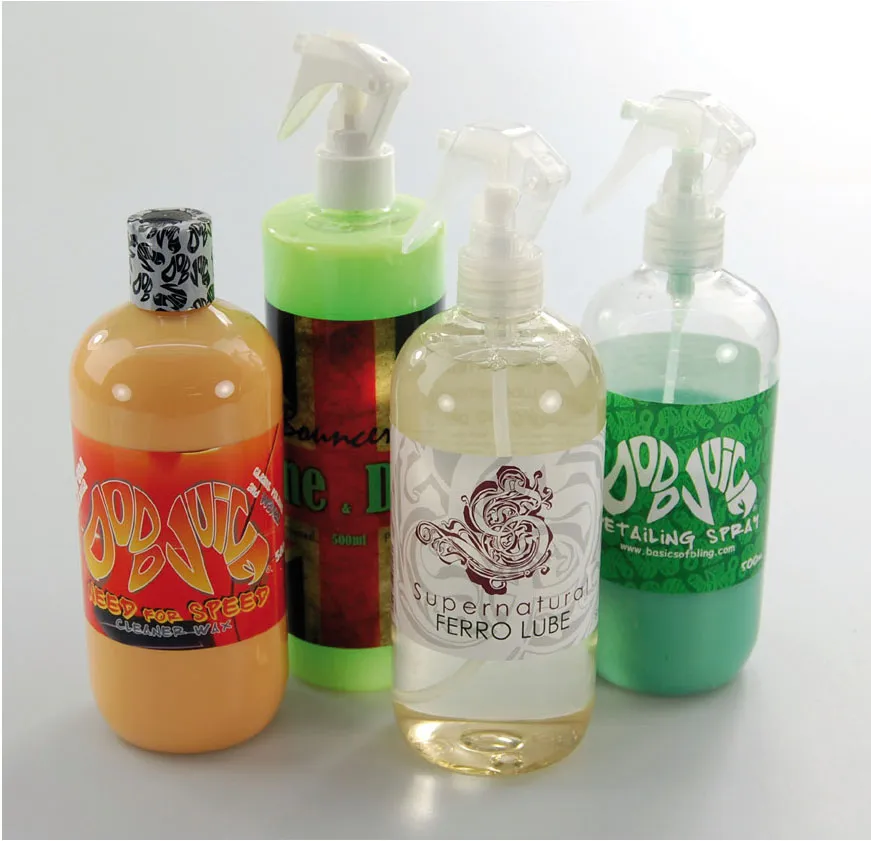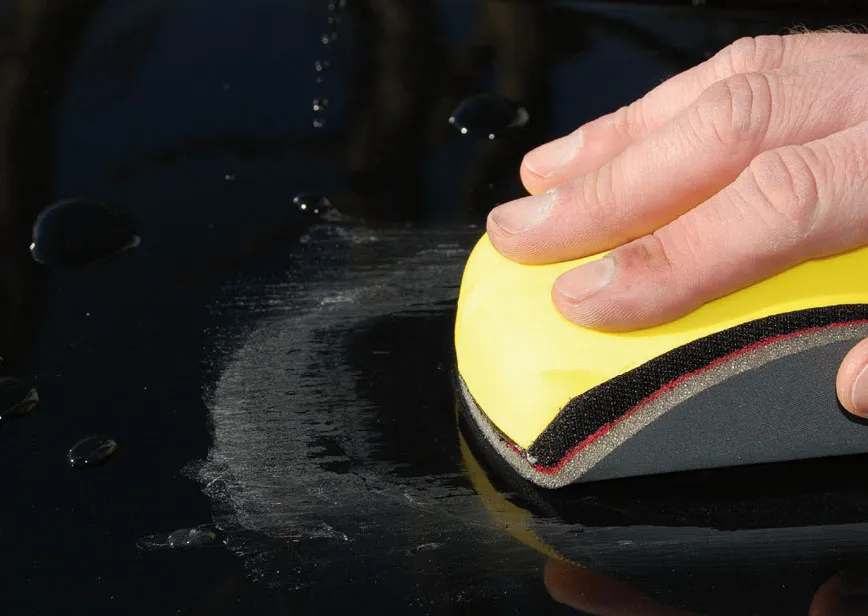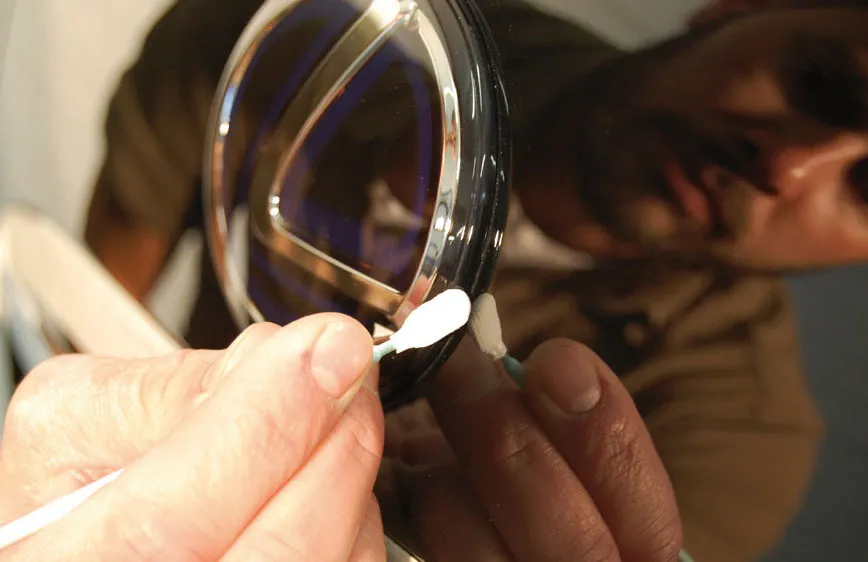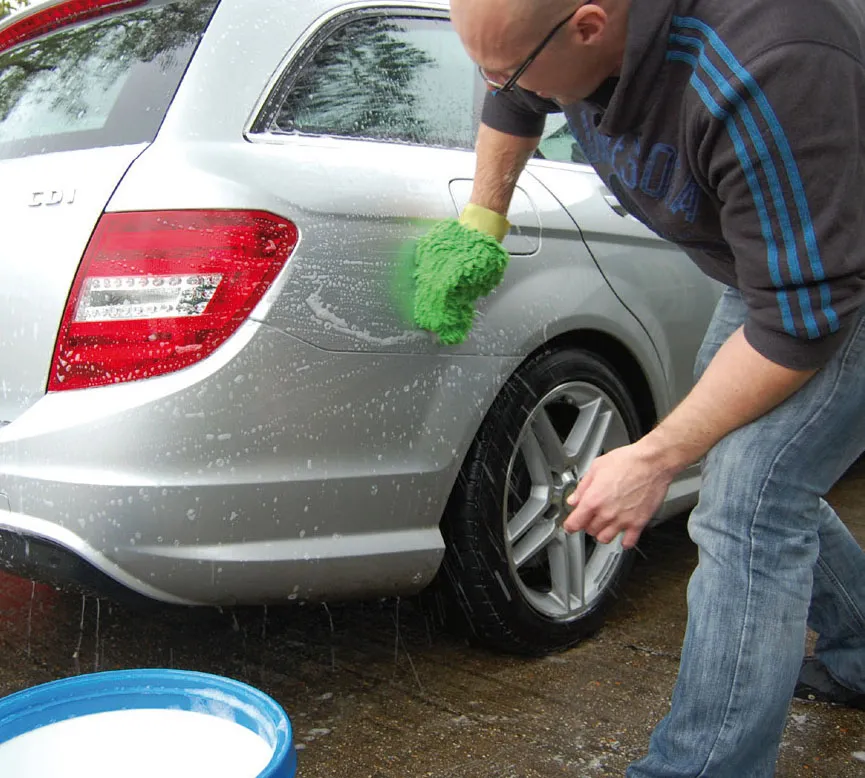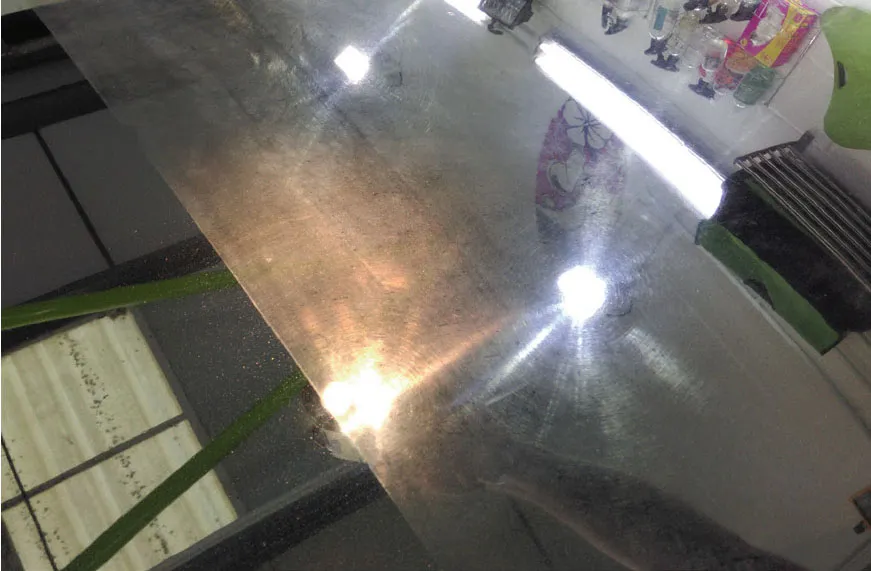![]()
CHAPTER ONE
INTRODUCTION
ABOUT THE BOOK
Detailing guides tend to follow tried and tested formats – every task is tackled as a separate project, leading to a specific end result. But this inevitably means a large degree of repetition throughout the book, and it is a fragmented approach that often fails to empower the reader. The authors therefore decided that it would be better to interrogate the surfaces tackled and the products/equipment used, rather than just dictating a string of processes that would be followed blithely. After all, if you realize that your wheels have the same (or a similar) clearcoated finish compared to the bodywork of your car, then you can employ the same fundamental techniques to decontaminate and protect them. And if a detailing spray cleans a particular surface and adds gloss without leaving a chalky residue, there is nothing to stop it being used on textured black plastic exterior trim, or even the dashboard.
Some products are very versatile and can multitask. Never pigeon-hole a product, but learn what it is, how it works, and what it can do (for you).
Therefore, this book places more emphasis on specific surfaces, contamination types and detailing products than other guides (which tend to be obsessed with a narrow process). Of course, for simplicity, the book is still divided into a number of sections, so the structure will feel familiar and information will remain easy to reference. The second difference is the underlying philosophy of the book: less is more. Instead of encouraging a heavy-handed approach involving machine polishers and sanding paper, which may seem exciting and exotic, the virtues of a ‘handsoff’ or ‘minimal interference’ approach are extolled. The paint already on your car is finite, and restoring the finish is – in technical terms – a destructive process. Avoiding damage, and using the least amount of products and processes to correct it when it does happen, will always be preferential.
Aggressive techniques should be avoided in favour of a gentler regime. It is easier to repeat a gentler process than rectify damage caused by more aggressive actions.
In other words, if all your car needs is a wash, then just wash it. If it doesn’t need a second coat of wax, stop after the first layer. This may appear to be an alien concept when other guides (perhaps created by car-care product manufacturers or resellers) encourage process after process, product after product, time after time. Yet it makes far more sense economically, environmentally and also philosophically.
Finally, an advanced apology for the heavy reliance on Dodo Juice products in photographic terms. Whilst this may seem like a subconscious sales technique, the simple reality is that photographing a product with a visible registered trade mark sometimes leads to legal complications for the authors and publisher. Using a Dodo Juice product will have no such implication. There are, of course, many alternative brands and products available. Choose the ones that suit you.
A HISTORY OF DETAILING
What is detailing exactly, and where did it come from? How does it compare to valeting? These aren’t unreasonable questions to ask. Detailing has, after all, sprung up quite suddenly in the UK and usurped the less glamorous pastime of ‘valeting’, and has made the stuffier concours scene seem strangely remote and old-fashioned.
The Hot Rod scene was the forefather to modern automotive detailing.
The reality is that valeting and detailing have a large overlap, whilst concours preparation, although championing extremely high standards of car care (including many detailing techniques), is perhaps more concerned with originality, tradition and even mechanics. The term ‘detailing’ originates from the United States, where the Hot Rod scene has resulted in an enviable heritage of custom paintwork and amateur car modification and maintenance. Pinstriping and airbrushing show that a great deal of importance is placed on the exterior finish of a car – an irony perhaps, given that the original ‘Hot Rods’ were solely focused on performance rather than styling, with front wings, bumpers and other fixtures being removed to save weight. The modern interest in paint finish and exterior styling has generated a lust for lustre, and a desire to protect these finishes.
Polishes, waxes, sealants and glazes have been created in their thousands by an industry eager to help car enthusiasts make their cars look good, and keep them looking good throughout the year and for years to come. Naturally, the most thorough and impressive results come from attending to every surface, of every component, on the vehicle – so nothing the eye can see, or the concours judge can inspect (such as the inside of a glovebox), is left dirty, marked or dull (should a glossy finish be desired). Preparation of these ‘details’ leads to a natural extension: ‘detailing’. A suggested definition is:
Detailing: The systematic and total decontamination, preparation and protection of the interior and exterior surfaces of a vehicle.
There are limits, naturally. Few detailers are going to remove an alternator to clean behind it, or attend to surfaces that cannot be easily seen or inspected. For many, the engine bay will remain untouched. This means that detailing will always have personal limits and a definition that is individual to detailers themselves.
It is attending to the smallest detail that sets detailing apart from mere car cleaning or valeting, but it falls short of full restoration (where paint is sprayed on to the car, rather than being merely corrected/refined).
If the authors were to suggest any limitations, it would be that detailing ends at heavy restoration of a finish, or mechanical work. Spraying rusty wheel nuts with paint, touching in stone chips and even replacing a flaking bonnet badge, would still fall under ‘detailing’. But a complete respray of a car would not. Removing rusty sections of bodywork and welding in replacements would, once again, be classed as mechanical restoration and beyond ‘detailing’. Nevertheless, write-ups that include this kind of mechanical restoration are particularly fascinating because they often show how a simple aim to ‘spruce up’ a car cosmetically through detailing, can lead to a much more comprehensive project.
So where does valeting fit into all this?
‘Valeting’ is less glamorous than detailing, but far more prevalent as a profession due to the demand for lower-end services at more affordable prices.
The easiest explanation is that valeters clean – and even ‘detail’ – cars, but do so on a purely commercial basis, and offer a faster, less intensive service than fully fledged ‘detailers’ (perhaps omitting to ‘mop’ – that is, machine polish – a vehicle). Originally, ‘valet’ came from the French word for servant, and in the United States a ‘valet’ is the man who parks your car for you when you arrive at an upmarket hotel or restaurant. Valets are also those male service staff who wait on wealthy individuals, and who are employed (even to this day) by hotels, to look after guests. When the drinks have been served and the shirt collars pressed, it would perhaps be a natural extension of the role for a valet to see to his master’s motor car.
Whilst employing a valet is rare in the UK these days, the role of gentleman car cleaner – or perhaps of a servant undertaking a chore – remains ingrained in public consciousness, and the job title of ‘valeter’ has resulted. From a theoretical point of view, a valet should clean a car to his employer’s liking, rather than ‘valet’ or detail a car to a specific standard. But that is splitting hairs. ‘Valeting’ became a popular concept in the UK in the 1980s and 1990s, and effectively became a byword for ‘car care’ until ‘detailing’ came along: an exotic American concept that promised a higher level of fastidiousness and even greater car care results. It means that today, valeting is often seen as detailing’s lower end relation, with paint correction regarded as the main differentiator between the two activities (perhaps because the Americans had more of a propensity to machine polish their cars).
Whether the lack of such a strong Hot Rod culture in the UK gave rise to valeting rather than the more intensive ‘detailing’ is difficult to say. Could it have led to a greater reliance on third parties to clean cars for owners (rather than the owners doing it themselves)? There is certainly less of a historical car modification scene in the UK compared to the United States, although this isn’t so true today, partly due to UK motor-sport expertise. If the average Englishman had been more likely to get someone to ‘valet’ his car rather than to ‘detail’ it himself (like his American cousin) it won’t necessarily be the case currently, especially within the specialist car-care enthusiast ‘detailing’ community. English-owned sites such as Detailing World (www.detailingworld.co.uk) now rival (or even overtake) the largest American sites, and the content is recognized as being amongst the most authoritative in the world.
Just as valeting involves an element of ‘detailing’ (to a certain degree), concours preparation will, by necessity, involve detailing. Most detailers find themselves entering the less formal, less traditional and less élitist ‘Show and Shine’ competitions, where cars are judged generally on the standard of detailing employed, rather than the originality or mechanical aspects of the car. Concours (or Concours d’Élégance, in longhand) competitions are arguably an even higher form of Show and Shine competition due to the additional criteria that entrants must meet, and the emphasis on the originality or quality of the restoration work. That said, Show and Shine competitions may be more concerned with paint correction, whereas that could be a smaller part of an overall concours score. What remains true is that every competition judging the appearance of a vehicle, whether Show and Shine or concours, will have different interpretations and assessments of preparation and finish, and so it is difficult to categorize them completely or compare them accurately.
THE ATTRACTION OF DETAILING
There is one last topic to cover in this introduction: why do we detail? What is it about making a vehicle clean and shiny that propels this hobby and industry forwards at such great pace? For many, detailing is seen as a waste of time. ‘Cars are there to be driven, not looked at’, is a commonly held view amongst non-detailers: ‘I’m too busy. . . it’ll just get dirty next time it’s driven.’
Naturally, detailers would beg to differ.
Show and Shine competitions should only be concerned with the standard of detailing, compared to ‘concours’ competitions that also tend to award or deduct points according to the originality or ‘patina’ of the vehicle.
For a start, there is a financial reward from detailing your car. A well kept exterior not only looks impressive but hints at a higher level of maintenance overall, attracting a higher price and more buyers at sale time. Paint defects, typically corrected by the dealer during pre-sales preparation, will not need to be rectified, saving the dealer some costs (that may otherwise have been reflected in the bid price). In short, detailing helps combat depreciation. And even if the financial reward is minimal or largely irrelevant, a detailed car often ‘feels’ better, perhaps like a new car, or one you could love again. It could save you the expense of trading it in, or even encourage you to drive it more considerately.
Man versus paint: eliminating swirls is a hugely rewarding aspect to detailing; the battle is then to keep the paint ‘swirl free’.
There is also a classic emotional effort/reward ratio with detailing that makes it an extremely enjoyable and satisfying hobby. Correcting paint takes patience, knowledge and skill. There are also many variables that can challenge the detailer throughout the process. Instead of man versus machine, it is man versus paint. The quest is ...

